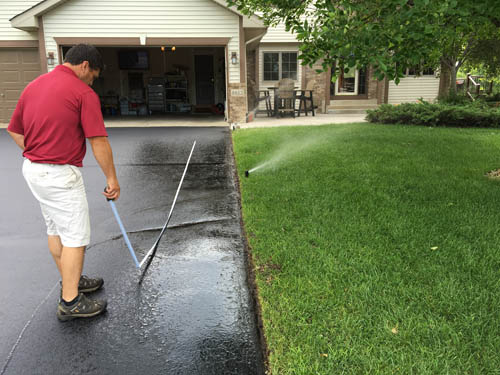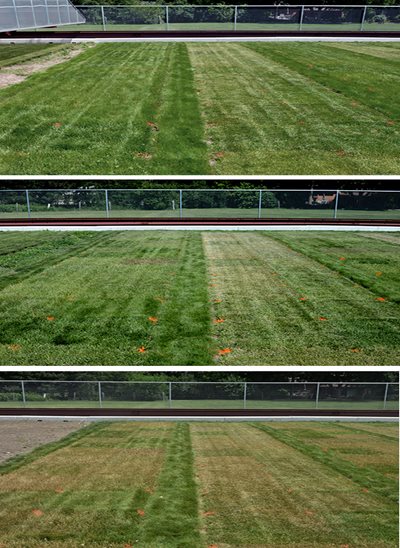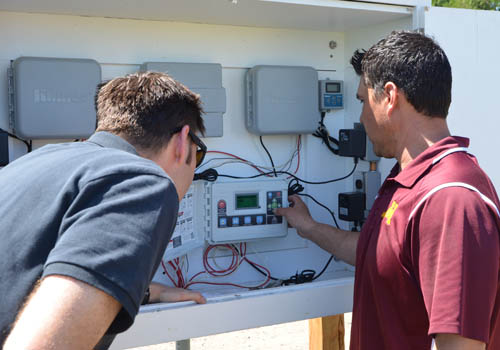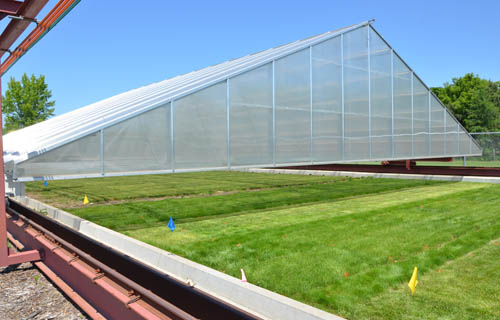If you were wasting up to 50,000 gallons of water annually on your lawn, would you want to know?
 Evaluating the efficiency of typical lawn irrigation practices—and helping homeowners and communities save money and conserve water—is at the heart of a two-year University of Minnesota Extension study funded by the Metropolitan Council.
Evaluating the efficiency of typical lawn irrigation practices—and helping homeowners and communities save money and conserve water—is at the heart of a two-year University of Minnesota Extension study funded by the Metropolitan Council.
“Despite some appearances to the contrary, we know that water is not a limitless resource, even here in the Land of 10,000 Lakes,” said Brian Davis, Senior Engineer at the Council. “Many communities in this region pump three times as much potable water during the summer as they do in the winter, and most of that is going onto lawns.
“We have tremendous potential for reducing the use of clean drinking water on lawns and reducing the need for new water wells as population increases. Also, homeowners can save a lot of money by upgrading irrigation controllers, picking the right grass mixes, and simply knowing some basic irrigation practices that can save a lot of water,” Davis said.
Surveying homeowners about their irrigation practices
 In 2016, U researchers surveyed more than 900 homeowners in the metro region about their lawn irrigation practices. Among the findings:
In 2016, U researchers surveyed more than 900 homeowners in the metro region about their lawn irrigation practices. Among the findings:
-
Kentucky bluegrass was the most universal lawn grass, comprising 73% of lawns.
-
Only 38% of respondents use their lawn for any type of recreation. The implication is that 62% could achieve curb appeal goals with aesthetically pleasing grasses that require less maintenance.
-
About 60% of homeowners with irrigation systems water on an automatic cycle, regardless of weather or soil moisture. This is often driven by local ordinances (for example, allowing watering every other day).
Auditing irrigation systems can result in big savings
Researchers conducted 62 home irrigation audits in 21 different metro area cities. One of the most shocking findings was the average homeowner irrigates 500 square feet of impervious surface – streets, driveways, sidewalks, patios, etc. In addition, 70% of irrigation systems had leaking sprinkler heads, and nearly half of the homeowners had never audited their system.
“We learned that at least half of homeowners may be overwatering or are unconcerned with the amount of irrigation they are applying,” said Sam Bauer, University of Minnesota Extension Turfgrass Educator. “It’s an opportunity for education about the importance of auditing lawn irrigation systems and choosing grass mixes that look and function well but don’t require as much water.”
And that’s exactly what the second stage of study is about: demonstrating the efficiency of different irrigation systems, and learning which grass mixes do best under drought conditions.
Comparing the efficiency of different irrigation systems

To prepare for the demonstration project, researchers sodded a large L-shaped plot of land on the University’s St. Paul campus with Kentucky bluegrass, creating six sections. Then they installed irrigation systems from three different manufacturers, with different types of controllers, including Smart Irrigation Controllers.
The controllers range from top-of-the-line, WiFi-accessible, soil-moisture-measuring smart controllers to a typical system with a rain sensor. Each system is flow-metered to determine how much water it uses. The goal is to keep all the plots looking uniformly green.
The University is also demonstrating water-efficient irrigation systems at sites in Woodbury and the Minnesota Landscape Arboretum. Signage will educate the public about the benefits of smart irrigation controllers and good irrigation practices.
Testing grass mixes under drought conditions
June 1 was Day One in a 60-day drought trial to learn how well popular grass mixes fare during drought-like conditions.
 Last fall, University of Minnesota researchers selected 30 different grass mixes found at Twin Cities garden centers and big-box stores. The mixes were planted on prepared soil in adjacent 1 meter by 1 meter plots, creating a patchwork strip. The strip was replicated so that one would be mowed to a height of 2 inches and the other to 3.5 inches. Then both strips were replicated three times to ensure reliable results.
Last fall, University of Minnesota researchers selected 30 different grass mixes found at Twin Cities garden centers and big-box stores. The mixes were planted on prepared soil in adjacent 1 meter by 1 meter plots, creating a patchwork strip. The strip was replicated so that one would be mowed to a height of 2 inches and the other to 3.5 inches. Then both strips were replicated three times to ensure reliable results.
The grass grew well during our wet spring, and researchers kept it mowed through the end of May. During the 60-day drought trial, the strips will be mowed one time per week.
Rainfall is kept off the turf by a large greenhouse-like structure on wheels that moves along tracks to cover the plots when a sensor on its roof detects rainfall.
Reducing the need to build and operate expensive municipal water wells
Efficient irrigation is critical to decrease the need for additional water supply wells. For some communities, reducing summer water demand could reduce the need for additional wells, thereby saving millions of dollars in capital expenditures and reducing stress on area aquifers.
“As urbanization increases and we continue to experience more extreme heat and drought, greater pressure is placed on our water resources,” Bauer said. Here are some top water-saving tips:
-
Adjust your watering practices with the weather – don’t just “set it and forget it.”
-
Select lawn grasses that use less water and can tolerate drought.
-
Irrigate in the morning hours to reduce loss to evaporation.
-
Audit your irrigation system for leaks, and implement water-saving technologies.
-
Improve your lawn quality by mowing to 3 inches or greater.
-
Install an EPA WaterSense-certified Smart Controller.
More information